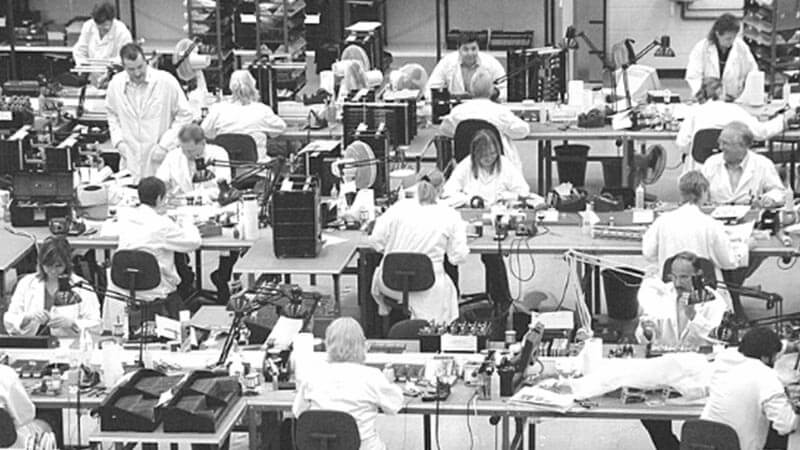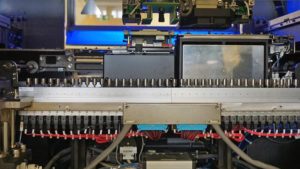Electronic product testing strategies
The increasing complexity of electronic technology that OEMs seek to produce demands an ever more efficient, agile and precise manufacturing process.
At the same time, OEMs also are looking for EMS partners who can not only deliver this but also offer highly effective test strategies at every stage of production.
And the key words here are strategies at every stage of production.
When it comes to testing electronics there is no universally right or wrong method that can be plucked magically from the hat or pulled ready-made from the shelf.
Instead there are a variety of methods that can be determined only by an analysis of factors such as the profile of risks arising from the specific production processes, the intended use and the throughput requirements. It’s also vital to consider the material characteristics of each component used and of course data arising from current failure mode capture and defect history.
By gaining insight and understanding of each of these elements, it’s possible to determine the most cost-effective testing processes needed to achieve the required levels of integrity.
This is why the increasingly complex OEM demands call for an EMS partner with a variety of testing capabilities and a track record of ensuring integrity in products far beyond the ramp and into the product’s full life-cycle in market.
At Chemigraphic, we do not hold to the oft-cited view that the importance of testing lies solely in ensuring products hit the critical timing required for an orchestrated market entry to maximise market share.
It is true that in electronics manufacturing, product launches can be delayed by faults that should have been identified and resolved much earlier in the production process.
However, testing policy should extend beyond just the physical test process…
OEM product design engineers often define their own test processes and since their primary concern is usually design validation, a version of this can then migrate to serve as the manufacturing test solution.
However, design validation is about methodically configuring, exercising and stressing every area of circuitry, giving confidence that each of the design elements meet the functional requirements. Since the validation tests are often undertaken by the design engineers themselves, they can be complex, requiring deep analysis of signals and timing. They are also often undocumented, use expensive analysis equipment and are manual in nature. Design validation is often a singular non-repeating event, so the length of time taken to perform these tests is largely irrelevant, and a single setup is usually sufficient.
All of this is not operationally efficient and may not even be appropriate, within a manufacturing environment where the key objectives for testing are:
- To ensure the test captures the actual profile of risks likely at a given stage. In a manufacturing environment, these will relate to construction and assembly, components and workmanship, rather than design.
- Eradicating redundancy. Testing is an overhead cost and performing tests which do not ultimately capture defects results in the unnecessary waste of time and resource. For instance, if there is some form of signal processing chain, then a designer will want to know how each segment performs and will undertake interim measurements. From a manufacturing perspective, it is more effective to check the output and, if correct, then all the interim stages must be correct by default. The facility to undertake interim measurements as part of a debug cycle to isolate defects is useful, but there is otherwise no need.
- Simplification. The ideal manufacturing test is a quick go/no-go, pass/fail test that any operator can perform. Hence we try to eradicate any complex software setup/configuration, or interpretation of results.
- Scalability/ parallel testing. Reliance on a single test setup causes a dependency and potential bottleneck. Investing in an expensive fully automated, high-speed test solution may seem prudent, but if a number of more modest setups can be run concurrently, then the overall throughput and cost-per-test can be better.
A testing strategy with true integrity must future-proof electronic devices not just for launch but for life.
Defects not detected at an early stage of production carry increasing cost implications the later they are detected in the manufacturing process.
Likewise, defective products reaching end customers risk high return costs and incalculable reputation damage.
Both can destroy the bottom line – and both should be avoidable.
The best EMS partners can deliver confidence to OEMs and integrity to their products through a rigorous, flexible and comprehensive test solution. The earlier a trusted EMS partner gets involved in product development, the better an effective (and cost-effective) test and inspection strategy can be comprehensively defined.
Early engagement lies at the heart of testing integrity and may involve a critical analysis of the product complexity and make up of PCBs, including component density and type. Commercial consideration will also be given to the volume profile, maturity and current stage in the lifecycle of the product.
All of this will ensure that the deployment of a suitable test and inspection solution neatly matches the required new product introduction process.
Electronic product testing at Chemigraphic
At Chemigraphic, we offer comprehensive quality control programmes and test services that ensure our customers have 100% confidence in the integrity and functionality of their products before they go to ramp.
Our testing capabilities support the full lifecycle of your product, from design to obsolescence, and include:
- Inline automatic optical inspection on all SMD lines
- Endoscope for defect analysis
- ‘Bed of Nails’ ATE for MDA, or where appropriate, combinatorial testing
- JTAG – boundary scan
- Device programming
- Numerous bespoke functional test rigs
- On-board programming of electronically programmable devices (EPDs)
- Safety testing
- X-ray technology on site
Our services don’t end when your product goes to ramp – we test for its full lifecycle.
Here’s an overview of the range of testing we offer.
AOI
Automated optical inspection (AOI) has been proven to be 65% more effective in identifying faults than manual inspection. With the ongoing progression in HD camera imagery and improved software processing, AOI is getting ever more reliable.
It is also increasingly affordable, making it no longer solely suited to the fully automated in-line production systems of high-volume product profiles. There are now some incredibly reliable and cost-effective bench-top systems for smaller product profiles available.
The latest systems have the capabilities to inspect the decreasing size of components and handle the ongoing reduction in size of PCB technologies on target boards.
Electrical testing
However, inspection alone can leave potential faults undiscovered. It is here that electrical testing is most efficient.
Electrical tests can be divided into two types: process tests and functional tests. Which type you use, or whether you use a combination, depends on the types of faults you are hoping to detect.
For a long time, the In-Circuit Test (ICT) has been the most effective method of electrical testing for high-volume manufacturing processes.
Tests for shorts, opens, missing, polarity, incorrect or defective parts have been laid bare using this bed-of-nails technique. The automated ICT now also allows you to power up the board under test and even perform a level of functional testing, or Boundary Scan, through the integration of testing instruments.
However, there are some drawbacks to ICT, particularly where the manufacturing volumes are not high. The cost of fixturing and programming can be high, and the need for test point access which requires ground up design for test (DFT), adds further to the testing investment.
Another option that offers an alternative to the one-off set-up costs of ICT is the Flying Probe (FP) system. This is ideally suited to product profiles that are lower.
Such systems vary in capabilities greatly, ranging from basic MDA (Manufacturing Defect Analysis) to the inclusion of Boundary Scans. The major advantage of FP is the relatively low cost to the OEM: as no fixturing is required and only a test program needs to be written. The best FP systems offer many of the same capabilities as ICT.
X-rays
Many products, however, will require an extra level of testing beyond those already discussed. For devices with hidden joints, such as BGAs and POP, AOI will not reveal voiding which can lead to product failure when being used.
X-Rays offer the best ability to detect such structural defects in solder joints. They can also be used to enhance fault detection in components themselves and in high density connectors.
Maximum test coverage – minimum opportunity for error
Chemigraphic offers a variety of tests that can be used in combination according to each product’s requirements. We maximise our test coverage to minimise the opportunity for error.
This offers you 100% confidence when products go to ramp and build in the integrity products need for their full life cycle.





